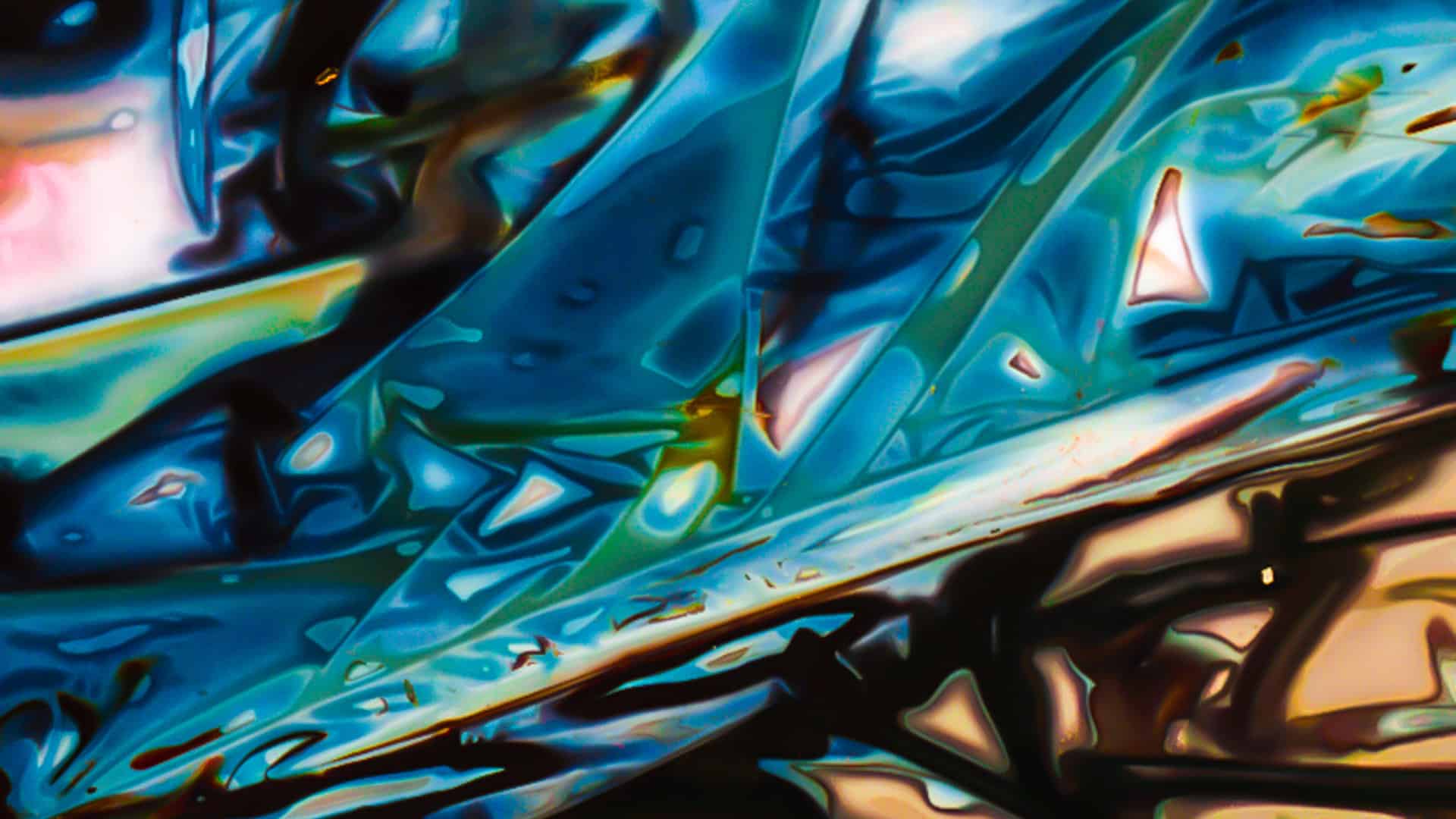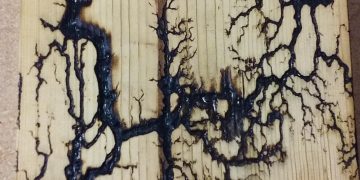Dada artist Man Ray experimented with cameraless photography, producing surreal and abstract images. Man Ray, a prominent figure in the Dada movement, is known for his groundbreaking work in cameraless photography.
His experimentation with techniques such as photograms and rayographs challenged conventional artistic norms and produced surreal and abstract images. Using light, shapes, and textures, Ray created innovative compositions that defied traditional photographic methods. His exploration of this unconventional form of photography expanded the boundaries of visual expression and left a lasting impact on the art world.
By embracing chance and spontaneity, Man Ray’s cameraless photography exemplified the Dadaist spirit of rebellion and experimentation, influencing generations of artists to push the boundaries of creativity.
Table of Contents
ToggleOrigins Of Dadaism In Art
Brief History Of The Dada Movement
The Dada movement emerged during World War I, a time of immense social and political upheaval. It originated in Zurich, Switzerland, as a response to the irrationality and absurdity of the war. Artists and writers, disillusioned with traditional artistic conventions, sought to challenge the status quo and break away from the existing norms. Dadaists believed in the power of randomness, anti-art, and the rejection of traditional aesthetic principles.
Philosophical Underpinnings And Goals
The Dadaists aimed to dismantle the traditional notions of art and the objective reality associated with it. They rejected logic and reason, embracing chaos and absurdity. It was a movement driven by anarchy, nihilism, and a deep disdain for the societal values of the time. Dadaists sought to provoke thought and challenge the audience’s perceptions through unconventional means, often laced with irony and humor.
Transition From Traditional To Experimental Art Forms
The Dadaists embraced experimental art forms, including the exploration of camera-less photography. They sought to push the boundaries of artistic expression by rejecting conventional techniques and pursuing innovative methods. Through their engagement with camera-less photography, Dadaists created abstract and surrealist compositions, embracing spontaneity and chance. This transition marked a significant shift from the traditional to the avant-garde, paving the way for the evolution of modern art.
Dadaist Photography Without A Camera
The Dada art movement of the early 20th century was revolutionary in its rejection of traditional artistic conventions. In the realm of photography, Dadaists embraced an avant-garde approach, experimenting with cameraless photography to challenge the very essence of the medium. This unconventional method of image creation was a bold departure from the established norms, embodying the Dadaist spirit of rebellion and innovation.
Explanation Of Cameraless Photography Techniques
Cameraless photography, also known as photogram or rayogram, involves the direct manipulation of light-sensitive materials without the use of a camera. Instead of capturing images through a lens, artists place objects directly on light-sensitive paper or film, exposing them to light to create unique, abstract compositions. This technique allows for a direct and unmediated interaction between the artist and the photographic medium, resulting in visually striking and conceptually profound imagery.
Role Of Chance And Spontaneity In The Process
The cameraless photography process embraces an element of unpredictability and spontaneity, aligning perfectly with the Dadaist ethos of embracing chaos and randomness. By relinquishing control over the traditional photographic process, artists allow for chance and serendipity to shape the final outcome. This infusion of spontaneity imbues the images with a sense of organic, raw energy, capturing the essence of the Dadaist rebellion against conventional artistic constraints.
Famous Dadaists’ Adoption Of The Medium
Renowned Dadaists such as Man Ray and Hannah Höch were at the forefront of adopting cameraless photography as a means of artistic expression. Their pioneering work in this unconventional medium pushed the boundaries of photographic art, challenging established norms and inviting viewers to question the very essence of visual representation. Through their innovative use of cameraless photography, these Dadaist visionaries left an indelible mark on the history of art, inspiring future generations of artists to explore new dimensions of creative expression.
Man Ray’s Rayographs
Dadaism, one of the most radical and influential art movements of the 20th century, sought to break away from traditional artistic norms and embrace the unconventional. Man Ray, a prominent figure within the Dada movement, is widely known for his groundbreaking experimentation with camera-less photography, which he termed “Rayographs.”
Introduction To Man Ray’s Unique Approach
Man Ray’s Rayographs, also known as photograms, represent a significant departure from the conventional use of a camera. Instead of capturing images through a lens, Man Ray placed objects directly onto photographic paper and exposed them to light, resulting in enigmatic and surreal compositions.
Technique And Process Behind Rayographs
The process of creating Rayographs involves placing objects, such as everyday items or abstract forms, onto light-sensitive paper and exposing them to light. This technique allows for the direct imprint of the object’s silhouette and texture onto the paper, resulting in visually captivating and thought-provoking imagery.
Impact Of Rayographs On The Perception Of Photography
Man Ray’s Rayographs challenged the traditional perception of photography as a medium for representing reality. By exploring the artistic possibilities of camera-less photography, Rayographs pushed the boundaries of visual expression and expanded the horizons of what could be considered a photograph.
Pioneering Cameraless Visuals
Dadaists Who Experimented With Cameraless Photography were a group of revolutionary artists who explored unconventional and innovative methods of creating visual art. One of the most intriguing aspects of their work was the pioneering of cameraless visuals, which challenged traditional photography and introduced new perspectives on image-making. Let’s delve into the unique approaches and the impact of these Dadaists in the realm of cameraless photography.
Exploration Of Other Dadaists’ Methods
Dadaists such as Hans Richter and Raoul Hausmann delved into experimental techniques, utilizing photograms, rayographs, and other avant-garde methods to produce visually striking images without the use of a camera. These artists embraced spontaneity, chance, and chaos as integral components of their creative process, resulting in abstract and surreal compositions that challenged the conventions of photography.
Comparison With Man Ray’s Contributions
Man Ray, although associated with the Surrealist movement, made significant contributions to cameraless photography through his rayographs, which involved placing objects directly onto photosensitive paper and exposing them to light. His innovative approach shares resemblances with the Dadaists’ methods, as both sought to disrupt traditional photographic techniques and push the boundaries of visual expression.
Influence On Later Avant-garde Movements
The Dadaists’ exploration of cameraless visuals had a profound influence on subsequent avant-garde movements, including Surrealism, Bauhaus, and Abstract Expressionism. Their daring experimentation sparked a wave of creativity, inspiring future generations of artists to embrace unconventional methods and challenge the established norms of image creation.
Christian Schad And Schadographs
Christian Schad, a prominent figure in the Dadaist movement, delved into the world of cameraless photography, creating a unique and experimental form of artistic expression known as Schadographs. With a focus on capturing the essence of realism and movement, Schad’s work challenged traditional photography, embracing the avant-garde principles of the Dada movement.
Overview Of Christian Schad’s Cameraless Photography
Christian Schad’s rejection of traditional photography techniques led to the exploration of cameraless photography, where he sought to capture the authenticity of subjects through unconventional means. This approach allowed Schad to break free from the constraints of traditional photographic methods, opening up new possibilities in artistic expression.
Schadographs And Their Role In Dadaist Expression
Schadographs, a term coined by Christian Schad, refer to the unique photographic compositions created without the use of a camera. These compositions played a significant role in conveying the Dadaist ideals of challenging societal norms and embracing the absurd. Schadographs became a powerful tool for Dadaist expression, allowing artists to disrupt conventional interpretations of reality through their visually captivating and unconventional compositions.
Technical Process And Artistic Significance
The technical process of creating Schadographs involved placing objects directly onto photosensitive paper and exposing them to light, resulting in striking, abstract compositions. This innovative approach to image creation pushed the boundaries of traditional photography, emphasizing artistic merit over technical precision. The significance of Schadographs lies in their ability to challenge conventional perspectives, encouraging viewers to question the nature of reality and perception.
Experimentation Beyond Dadaism
The Dadaist movement of the early 20th century, known for its avant-garde and anti-art ideology, heavily influenced the realm of photography with its unconventional approach to creating visual art. While the Dadaists experimented with camera-less photography as a means of rejecting traditional artistic forms, their bold and innovative techniques have continued to inspire modern artists. This article delves into the evolution of camera-less methods in post-Dada art, the ongoing development and adaptation of these techniques, and the enduring influence of Dadaists on contemporary photographic arts.
Cameraless Methods In Post-dada Art
Dadaists such as Man Ray and László Moholy-Nagy pioneered the use of camera-less photography, employing innovative methods to create abstract and surreal imagery. By placing objects directly onto light-sensitive photographic paper or using techniques like photograms and rayographs, they challenged the notion of traditional photographic composition and representation.
Evolving Techniques And Modern Adaptations
In the wake of Dadaism, artists have expanded upon camera-less methods, incorporating digital technology and mixed media to push the boundaries of experimental photography. From chemigrams and cyanotypes to digital manipulation and installations, contemporary practitioners continue to explore and redefine the possibilities of camera-less imagery, embracing a fusion of old and new techniques.
The Lasting Legacy Of Dadaists In Photographic Arts
The legacy of Dadaist experimentation reverberates throughout the photographic arts, influencing not only the techniques utilized but also the conceptual underpinnings of image-making. The spirit of innovation and defiance of convention embodied by the Dadaists lives on, inspiring artists to challenge established norms and forge new paths in visual expression.
Capturing The Intangible
When it comes to the art of capturing the intangible, the Dadaists were pioneers who delved into the realm of cameraless photography. Through experimental techniques and a disregard for traditional photographic methods, they sought to express abstract qualities in a way that was unconventional and thought-provoking.
Abstract Qualities Emphasized By Dadaists
The Dadaist movement focused on disrupting conventional norms and values, embracing chaos and irrationality. Through their cameraless photography, they emphasized the abstract qualities of spontaneity, chance, and unpredictability. Dadaist artists aimed to capture the essence of the subconscious mind, blurring the lines between reality and imagination.
Interpretations Of Dadaist Cameraless Works
The cameraless works of Dadaists have been interpreted as a visual exploration of the unconscious, a manifestation of the subconscious mind through abstract forms and shapes. By embracing unconventional and experimental methods, Dadaists aimed to challenge the viewer’s perception and provoke unconventional interpretations of the world around them.
Public Reception And Academic Reflections
The reception of Dadaist cameraless works has been varied, with some members of the public embracing the unconventional nature of the art, while others have struggled to comprehend its deeper meaning. Academically, reflections on Dadaist cameraless photography have explored its role in challenging traditional artistic boundaries and its influence on subsequent avant-garde movements.
Legacy Of Dadaists In Modern Art
The Legacy of Dadaists in Modern Art is a testament to the groundbreaking influence of the Dada movement on artistic expression. Although best known for its avant-garde performances and assemblage art, Dadaism also played a pivotal role in the evolution of photography, particularly through the exploration of cameraless photography. This niche form of artistic experimentation has, in turn, left a lasting imprint on modern art and continues to influence contemporary artistic methodologies.
Cameraless Photography’s Influence Today
Cameraless photography, a technique pioneered by Dadaists such as Man Ray and László Moholy-Nagy, continues to inspire contemporary artists and photographers. By embracing alternative methods of capturing images, artists are able to break free from the constraints of traditional photography and explore new realms of imaginative expression.
Preservation Of Dadaist Philosophies
The Dadaist emphasis on experimentation and the rejection of conventional artistic norms continues to resonate with modern creatives. The preservation of Dadaist philosophies in current artistic practices serves as a testament to their enduring relevance in shaping the trajectory of art history.
Dada’s Impact On Contemporary Artist Methodologies
The impact of Dadaism on contemporary artist methodologies cannot be overstated. By encouraging artists to question established conventions and embrace unconventional approaches to creation, the Dada movement has fostered a spirit of innovation that continues to drive artistic exploration in the present day.

Credit: www.blind-magazine.com
Frequently Asked Questions For Dadaist Who Experimented With Camera Less Photography
What Is Dadaist Photography?
Dadaist photography refers to an artistic movement that experimented with unconventional techniques and concepts, rejecting traditional aesthetics. Embracing chance and spontaneity, Dadaists often utilized cameraless photography to create unique visual expressions.
How Did Dadaists Explore Cameraless Photography?
Dadaists explored cameraless photography by using innovative methods such as photograms, solarization, and rayograms. By directly manipulating light-sensitive materials without traditional camera equipment, they sought to challenge and transcend the limitations of conventional image-making.
What Impact Did Dadaist Photography Have On Art?
Dadaist photography revolutionized the art world by expanding the boundaries of visual creativity and challenging established norms. Its experimental nature influenced subsequent movements and continues to inspire contemporary artists, leaving a lasting legacy of unconventional expression and boundless imagination.
Conclusion
In the world of camera-less photography, Dadaist artists have made significant contributions. Their experimental approach has opened new creative avenues and challenged traditional notions of photography. By embracing chance and spontaneity, these artists have pushed the boundaries of visual expression, inspiring future generations of photographers and artists to think outside the box.









